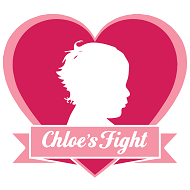 (First published as an insert in the USA Today published on Sept 1, 2017)
(First published as an insert in the USA Today published on Sept 1, 2017)
Imagine you are a prize fighter facing the toughest opponent of your life. You step into the ring only to realize you have no boxing gloves and no corner man to coach you through the fight. You have the heart but not the necessary tools.
Now imagine your opponent is a terminal illness and what you are missing is a cure and doctors able to offer you viable treatment options. This is the harsh reality for millions of American children who have been diagnosed with a rare disease.
Finding research incentives
The National Institute of Health estimates that there are roughly 7,000 rare diseases affecting 25-30 million Americans. Only about 500 of these diseases have any sort of treatment option and rare diseases disproportionately affect children. Only 30 percent of these children will live to their fifth birthday.
In 1983 Congress passed the Orphan Drug Act. This landmark piece of legislation provided a set of incentives that encouraged the pharmaceutical industry to consider rare disease drug development as a profitable business prospect and thereby increased interest in rare diseases in the private sector. Less attention, however, has been given to the creation of public institutions that support research crucial to medical advancement in genetics, which would greatly benefit the rare disease community.
The formation of a number of departments within the National Institute of Health such as the Office of Rare Disease Research and the Office of Rare Disease Research at National Center for Advancing Translational Science are hubs of cutting-edge research that provide the essential knowledge advancements. The pharmaceutical industry then uses these advances to develop life-saving drugs for rare diseases. Rare disease treatments depend on these public-private partnerships. Without this synergy millions of children with rare diseases would be completely excluded from opportunities for medical advancement available to children with more common diseases.
Children need our help
As Americans, we operate under the assumption that society owes each child born into this world a certain set of opportunities and protections. We fund public education because all children deserve an education. We fund federal departments that prevent child exploitation because all children deserve protection. Let us continue our commitment to each child born into this country by agreeing that every child deserves a treatment option no matter how rare the disease. Let’s find 7,000 more boxing gloves because every child deserves the chance to fight.
